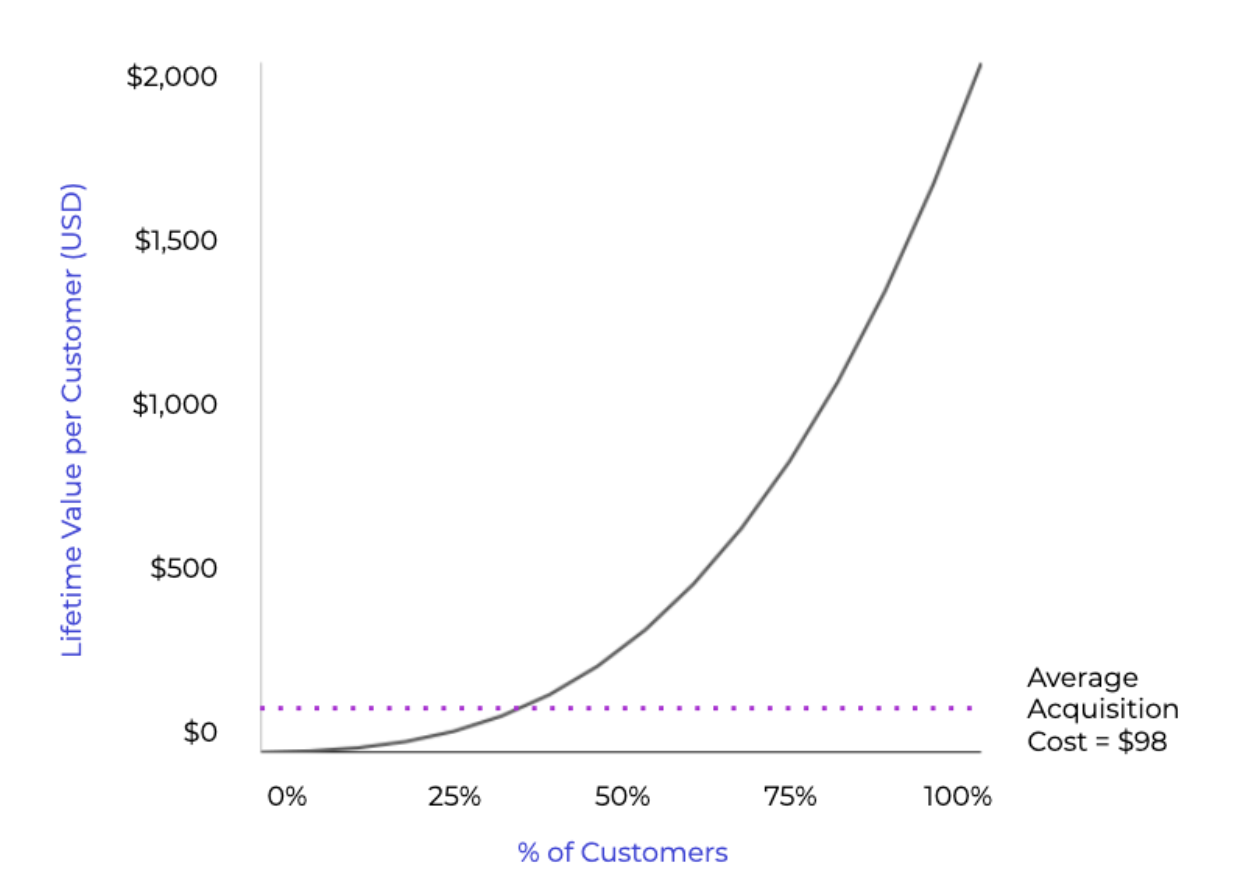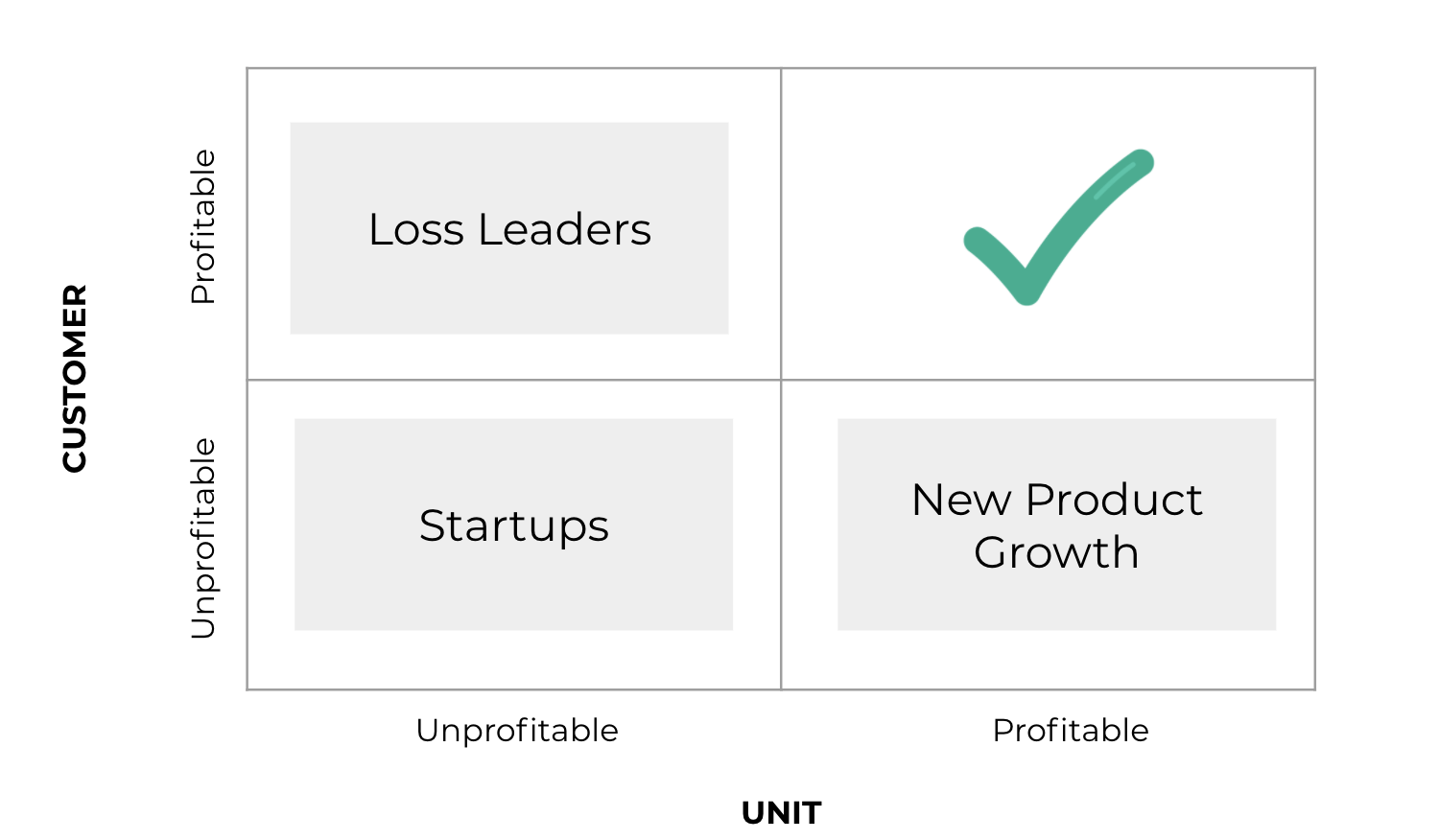I read through today’s earnings calls by Tapestry and found it to be very interesting. They mentioned the words profit or profitability 40 times and the word customer 70 times. However, customer lifetime value and repeat purchase rate is mentioned only once. We are seeing luxury businesses suffer from massive decreases in customer-level lifetime value even when new customer growth is up. Another interesting company is Wayfair, which has a ton of scandal surrounding it right now, but also reported profits for the first time (report).
This gives rise to the question of how are these companies defining profitability. Are they profitable at the customer level, SKU level, or both?
During the COVID-19 pandemic, the biggest seismic shift for start ups has been toward profitability. Every single startup that you know is trying to cut down its costs and trying to figure out how to become unit profitable. While the financials focus on profitability from a gross margin perspective, we think about it from an additional perspective of customer-level profitability.
Basic Concepts
Unit Economics: A business may consider itself profitable when the revenue it makes on sale of a product is higher than the summer for variable and fixed costs.
Unit economics focuses on whether or not the individual SKUs you are selling are profitable.
Customer Profitability: A business can be considered customer profitable if it acquires customers at a cost lower than the lifetime value of its profits. I wish during these earnings calls the companies could share a chart that gave me a true measure of profitability that might look like the following:

In this chart, every customer’s lifetime value (minus CAC) is plotted lowest to highest and we can then plot a line that shows average CAC. This would really highlight if the business is truly profitable or not.
Look at the area under the curve for customer lifetime value and subtract the area under the curve for acquisition cost. If you get a positive number, you are positive at the customer level.
If you are selling anything between $5 and $150 in terms of SKU pricing, it’s very likely that you’re acquiring customers at a loss on the first transaction. If you are unprofitable at first purchase, it’s important to consider customer lifetime value.
When you switch your mindset from only a product perspective to a customer perspective, you can focus on earning more revenue from your customers over their lifetimes.
Profitability Comparison

A business might be considered profitable in any of the quadrants above except the bottom left, with the most important being the top right.
Unprofitable at the Unit and Customer Levels
Most businesses, when they are startups in the early days, are unprofitable at the unit level and at the customer level This is why investments happen. You’re spending that money to build the product and subsidize customer acquisition. For example, think about PayPal giving away $15 to start an account. Uber and Lyft gave away gift cards to earn customers in the early days. By Series E in fundraising, companies will transition out of this quadrant.
Profitable at the Customer Level
Loss leaders are companies that acquire customers at a loss with the intention to sell the customer incremental products and services throughout the life of the relationship. Dollar Shave Club is a great example; they sell the razors at a loss but make a profit selling the razor blades. Key strategies for this quadrant are cross-sell and up-sell.
Profitable at the Unit Level
New product growth companies have typically high customer acquisition costs. Even if the unit cost is profitable, the customers are unprofitable. For example, telecom operators have high initial contract value. They need to build volume and longevity to be profitable at the unit level, but these companies are usually unprofitable at the customer level.
Another example for this quadrant are streaming services. Disney Plus launched Hamilton to get a lot of customers in the door, whereas Apple TV offered a 1-year trial. Disney Plus’s strategy focused on profitability at the unit level, rather than the customer level.
Profitable at the Unit and Customer Levels
This quadrant is the goal and when considering total Customer Lifetime Value, we expect the business to be both profitable both at the customer and unit level.
Conclusion
Companies like Tapestry and Wayfair are reporting profitable growth, but this might be misleading if they are only profitable at the unit level. It’s important to look at customer-level profitability to see the full story. For a company to maintain profitability, it’s critical to build long-term customer relationships and focus on improving customer loyalty and customer lifetime value.
For more details on how to calculate profitability at the customer level, read our whitepaper.